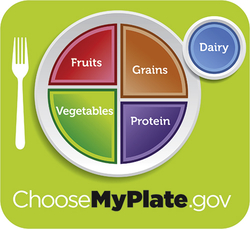Nutrition and Growth and Measurement
Examination
Technique
Findings
Anthropometrics
Measure height and weight
Add 10% for large frame; subtract 10% for small frame.
EXPECTED: Women: 100 pounds for first 5 feet, plus 5 pounds for each inch thereafter. Men: 106 pounds for first 5 feet, plus 6 pounds for each inch thereafter.

UNEXPECTED: Weight loss that equals or exceeds 1% to 2% in 1 week, 5% in 1 month, 7.5% in 3 months, 10% in 6 months.

EXPECTED: 18.5-24.9 for men and women.
UNEXPECTED: BMI <18.5 is classified as undernutrition. BMI 25-29.9 is classified as overweight. BMI 30-39.9 is obesity. BMI ≥40 is extreme obesity.
Measure waist circumference
Indicator of visceral fat. Using a tape measure with millimeter markings, measure waist at high point of iliac crest when patient is standing and at minimal respiration.
EXPECTED: Waist circumference <40 inches for men and <35 inches for women.
UNEXPECTED: Measurements >40 inches in men and >35 inches in women are associated with increased risk for type 2 diabetes, hypertension, and cardiovascular disease.
Calculate waist-to-hip circumference ratio
Another measure of fat distribution. Using tape measure with millimeter markings, measure waist at a midpoint between the costal margin and the iliac crest. Then measure hip at the widest part of the gluteal region. Divide waist circumference by hip circumference to obtain the ratio.
EXPECTED: Ratio <0.9 in men and <0.8 in women.
UNEXPECTED: Ratios >1.0 in men and >0.85 in women indicate increased central fat distribution and increased risk for obesity-related disease.
Determine Diet Adequacy
24-hour diet recall
Ask patient to complete 24-hour food and beverage recall. Ask specific questions about method of food preparation, portion sizes, amount of sugar-sweetened beverages, and use of salt or other additives. The U.S. Department of Agriculture ChooseMyPlate.gov website, based on the 2010 Dietary Guidelines for Americans, has a useful web-based tool for tracking daily food and beverage intake by food groups (grains, vegetables, fruits, dairy and protein foods; www.supertracker.usda.gov/default.aspx)
EXPECTED: Plate of food should have half fruits and vegetables and half grains and protein. Recommended daily amounts of fruits, vegetables, grains, and protein is based on the individual’s age, sex, and level of physical activity. Recommendations can be found at the ChooseMyPlate.gov website.

Determine Nutritional Adequacy
Calculate estimates for energy needs
Use actual weight for healthy adults.
Calories
Kcal/kg
Weight loss
25
Use adjusted weight for obese patients.
Weight maintenance
30
Weight gain
35
Hypermetabolic/malnourished
35-50
Estimate fat intake
Provides 9 calories per gram; present in fatty fish, animal, and some plant products; classified as saturated, trans, monounsaturated, and polyunsaturated.
EXPECTED: 20% to 35% of the daily calories consumed should come from fat.
Estimate protein intake
Provides 4 calories per gram; present in all animal and plant products.
EXPECTED: 10% to 35% of daily calories consumed should come from protein; Recommended Daily Allowance (RDA) goal is 46 g for adult women and 56 g in adult men.
Estimate carbohydrate intake
Provides 4 calories per gram; classified as simple (sugars) or complex (starches and fibers).
EXPECTED: 45% to 65% of the total calories consumed should come from carbohydrates, with selections predominantly coming from complex carbohydrates.
Estimate fiber intake
EXPECTED: Adequate Intake is 25 g/day for adult women and 38 g/day for adult men. Recommended fiber intake ranges from 14 to 31 g/day for children aged 1-18 years.
Special Procedures
Measure mid–upper arm circumference (MAC)
Place measuring tape around upper right arm, midway between tips of olecranon and acromial processes. Hold tape snugly and make the reading to nearest 5 mm.
This measurement is used along with the triceps skinfold (TSF) thickness to calculate midarm muscle circumference (MAMC).
EXPECTED: Between 10th and 95th percentiles.
UNEXPECTED: <10th or >95th percentile (see table below). ![]()
Stay updated, free articles. Join our Telegram channel

Full access? Get Clinical Tree


Nutrition and Growth and Measurement
Get Clinical Tree app for offline access
